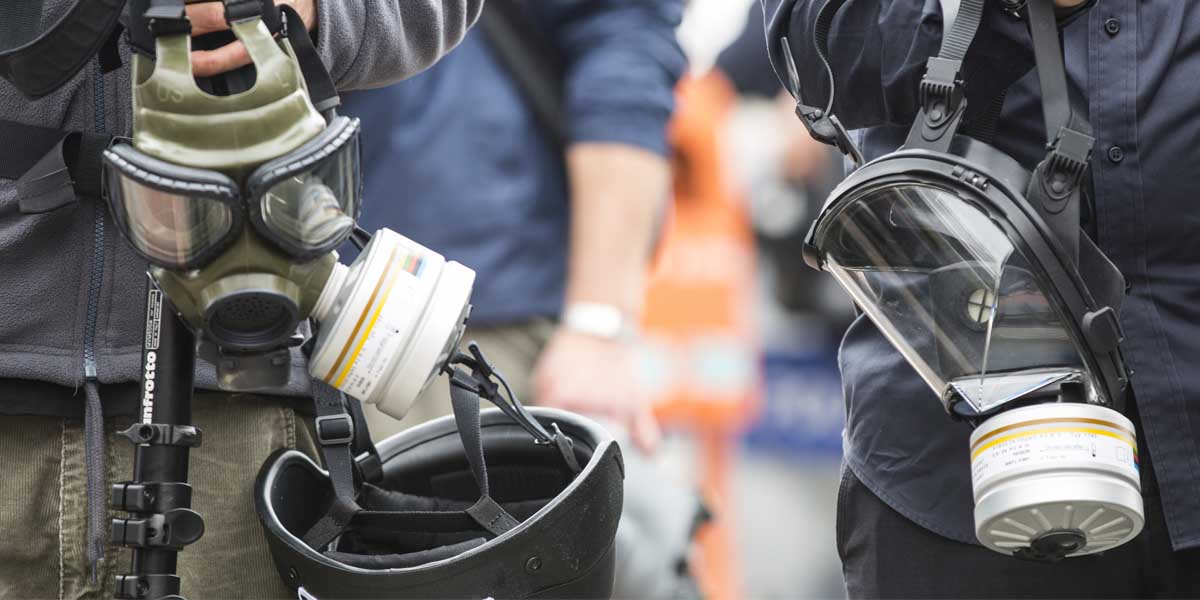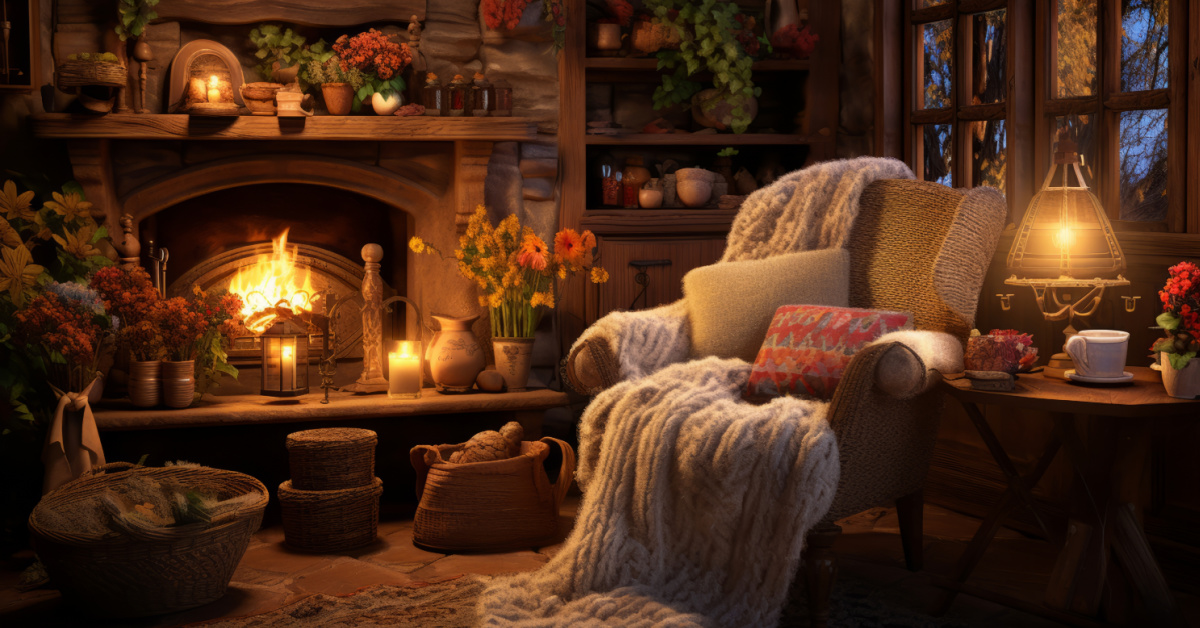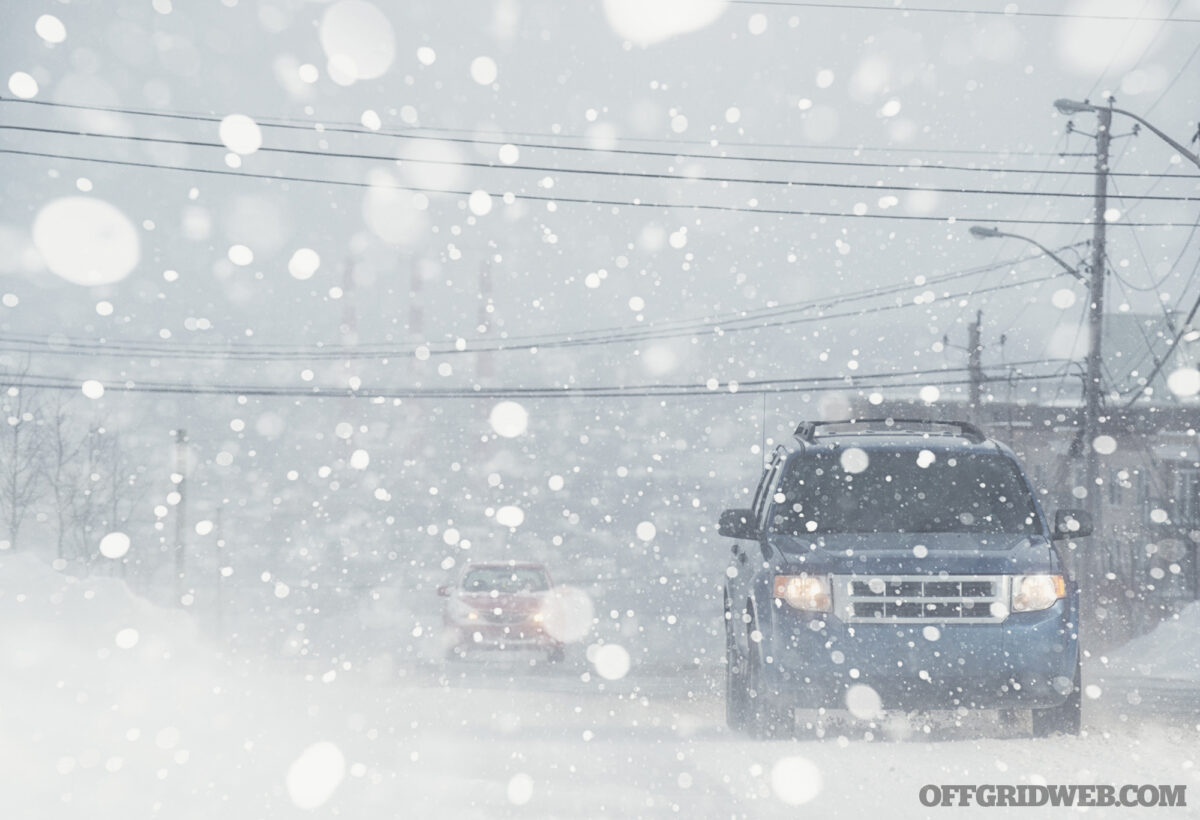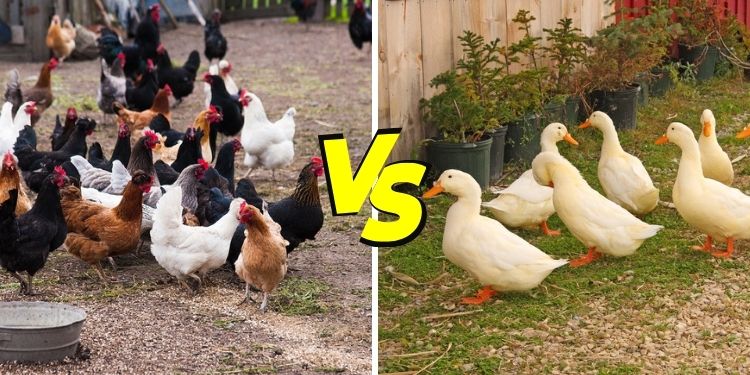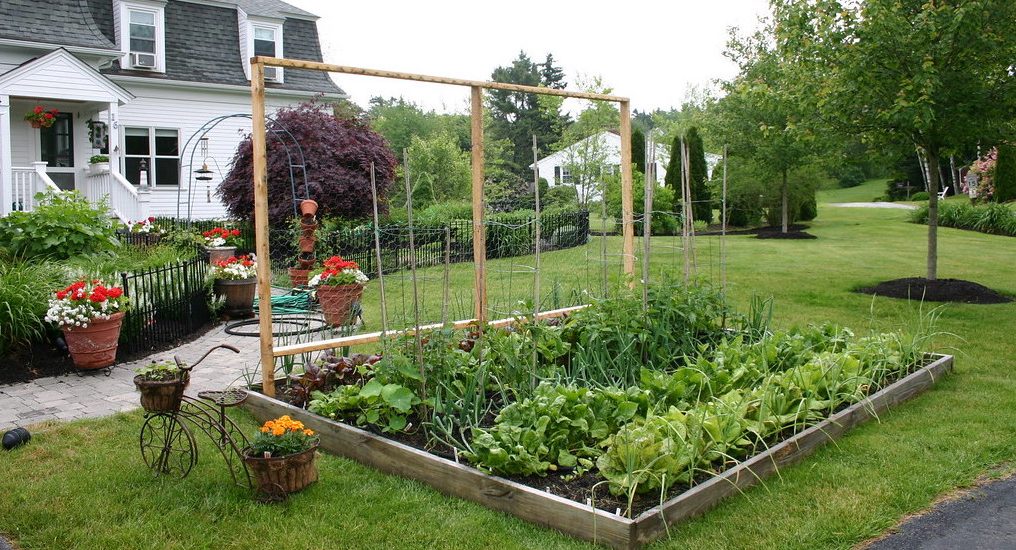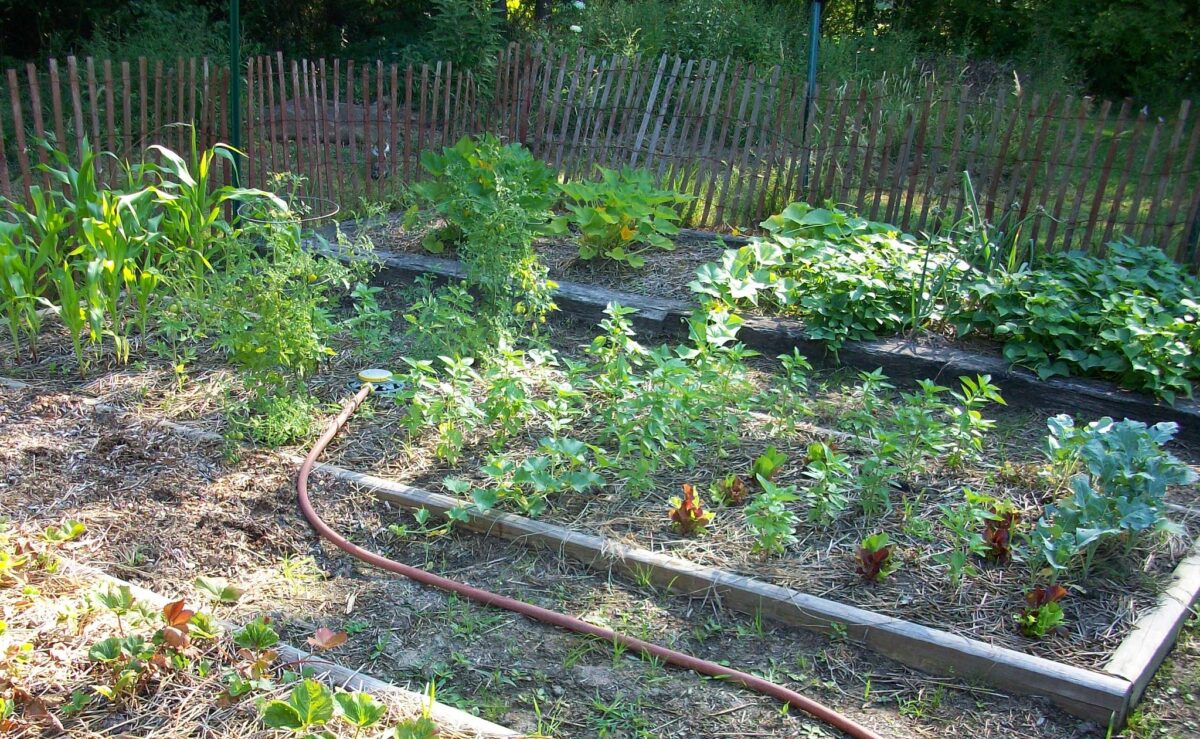February 18, 1848 was the birthday of Louis Comfort Tiffany—a proponent of Art Nouveau, particularly in the art of glassmaking.
Continue reading
Category: Uncategorized
The Best Gas Mask for the Average Prepper
Are you looking for a gas mask as part of your disaster prepping? The term gas mask is a bit confusing because it can refer to various types of respirator masks. Here, we will focus
Read the rest here
The Widow in the Woods: Part 2
Grace brings her uninvited guests into her home. Will her strategy be found out or will her age give the intruders a false sense of security?
Continue reading here
What If: Your State Is Hit With A Deep Freeze?
We asked two experts, Jerry Saunders and Patrick Diedrich, what they would do if their state was hit by an unprecedented deep freeze.
Continue reading here
Chicken vs Duck – Ask a Prepper
For the average person, choosing between ducks and chickens is often a matter of personal preference, sometimes based on superficial factors like which one is cuter.
But for preppers, there is another layer (no pun intended) to consider when making this decision. The question we’re really asking about chickens versus ducks is, “Which will be easiest to raise when the world is in chaos and food sources are scarce?”
When SHTF, your stockpiled food will only last so long; eventually, you’ll need to start producing your own. The people who thrive will be the ones who can produce nutritious food with limited resources. So, which one is better for preppers, chickens or ducks?
Which Is Easier to Keep, Chickens or Ducks?
If you’re worried about feeding yourself and your family when SHTF, imagine trying to feed a flock of poultry!
You don’t want to end up in a position where you’re competing with them for food sources, but you also want to provide the best possible care. This plant grows almost everywhere in America, and will also double the egg production of your flock.
Options for Housing Chickens and Ducks
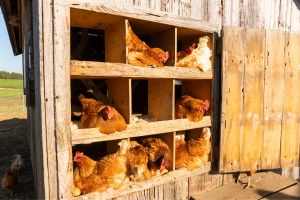 You have a few options when it comes to housing chickens and ducks, and these choices determine how much food you have to provide for them.
You have a few options when it comes to housing chickens and ducks, and these choices determine how much food you have to provide for them.
You can raise chickens and ducks in a few ways: confined in a permanent coop, allowed to range freely about your property, kept in poultry tractors.
There are pros and cons to each method, but with all of them, the most important factors to consider are predation, egg collection, and keeping your flock out of your garden areas during certain times of the year.
Keeping Your Flock in a Coop
Chickens and ducks are both easily raised in coops, and you can even keep them together in one house. If you’re confident you can provide plenty of food and grains for your chickens, they are easier to keep in a coop than ducks.
Ducks are messier than chickens, and they like to have a pool of water, which may be hard to supply when you’re in survival mode. Also, keeping your duck coop clean may be a bigger chore than it’s worth.
Related: Livestock Animals You Should Start Raising For The Upcoming Economic Crisis
The advantages of keeping ducks and chickens in a coop are that you can find their eggs more easily, and they are less likely to become someone else’s dinner. However, that means you need to provide all of their food and water.
Free Range Chickens and Ducks
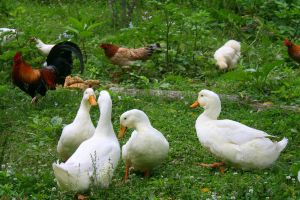
Free-ranging your chickens and ducks has a lot of benefits, but it can also end up in disaster.
When I was a kid, we had a flock of 40 free-range bantam chickens that fed a hungry goshawk all winter.
By spring, there were only 8 chickens left!
Free…
Making Your Home More Self-Sufficient, by Jonathan Rawles
As we have just passed the midpoint of winter, it’s time to be laying plans for the spring. Whether you are already residing at a rural retreat or it’s still a future goal, there opportunity to improve on your home’s self-sufficiency and food production.
Where can you start with self-sufficiency if you’re still on a suburban lot? You must be more considerate of neighbors, local ordinances, and homeowners’ Associations (HOAs). But even so, there’s great potential for supplemental food production even on a city lot. A few projects to consider:
Replace ornamental trees with productive fruit or nut trees. With minimal impact to the “curb appeal” of your property, fruit or nut trees can provide a valuable crop once established. Check with a local nursery to select appropriate varieties for your climate. Be sure to choose a location that will accommodate the tree’s future growth.
Plant perennial bushes and vines. While less subtle than trees, perennial bushes and vines are another excellent low-maintenance food production option. Stick with thornless varieties, unless you want them to serve double duty as an intimidating hedge. Note that raspberries and blackberries are notoriously aggressive and will need to be isolated from other garden areas or cut back regularly.
Raised beds allow for intensive growing of annual vegetables and herbs. Each year, we find that we don’t have quite enough garden space, and add a new bed or two. Raised beds can be built or purchased, preferably constructed from cedar or other rot-resistant material, though many other do-it-yourself options exist. To fill them cost-effectively, consider buying a soil and compost blend from a local landscape supply company rather than bagged potting mix from the big box store and make your own amendments.
Maintaining productive soil requires fertilizer. While it’s helpful to buy prepared fertilizers, worm castings, or other amendments as needed, home composting helps recapture nutrients from household refuse that would otherwise go to waste. Establish a backyard compost heap (avoiding meat scraps or other materials that will produce odors or attract pests), and you’ll have an ongoing fertilizer supply for your garden.
Backyard livestock options may depend on your local ordinances or HOA. The biggest limitations are space to keep them in sanitary conditions, and the ability to produce enough feed. Chickens are justifiably popular, while others have had success with backyard rabbits.
Backyard poultry are an excellent first line in your recycling efforts. As well as producing eggs and meat, they also create rich compost. While not as omnivorous as pigs, chickens can have their feed supplemented with leftovers and take a first pass on garden waste. (Take care to provide adequate poultry manure aging, rather than putting fresh manure directly into the garden). We find that backyard chicken keeping is much more pleasant with a fully covered coop and enclosure with a heavy layer of straw litter.
Ultimately, with any backyard food production, remember that it supplements a well-stocked pantry. Even on a larger acreage, producing a large volume of calories or…
Carbon Controls To Stop You From Growing Your Own Food
In early 2020, in the midst of the covid lockdowns, blue states run by leftist governors pursued mandates with extreme prejudice. In red states like Montana, after the first month or two most of us simply ignored the restrictions and went on with life as usual. It was clear that covid was not the threat federal authorities made it out to be. However, in states like Michigan the vise was squeezed tighter and tighter under the direction of shady leaders like Gretchen Whitmer.
Whitmer used covid as an opportunity to institute some bizarre limitations on the public, including a mandate barring larger stores from selling seeds and garden supplies to customers. “If you’re not buying food or medicine or other essential items, you should not be going to the store,” Whitmer said when announcing her order. The leftist governor was fine with purchases of lottery tickets and liquor, but not gardening tools and seeds.
She never gave a logical reason why she targeted garden supplies, but most people in the preparedness community understood very well what this was all about: This was a beta test for wider restrictions on food independence. There was widespread rhetoric in the media throughout 2020 attacking anyone stockpiling necessities as “hoarders,” and now they were going after people planning ahead and trying to grow their own food. The establishment did not want people to store or produce a personal food supply.
Another prospect that was being openly discussed among globalists was the idea that lockdowns were “helpful” in ways beyond stopping the spread of covid (the lockdowns were actually useless in stopping the spread of covid). They suggested that the these measures could be effective in preventing global carbon emissions and saving the world from “climate change.” The idea of climate lockdowns began to spread.
The corporate media has since lied about the existence of the climate lockdown agenda, but articles and white papers extolling the virtues of shutting down the planet in the name of climate change are easy to find and read. The globalists and their academic defenders wanted PERMANENT lockdowns, or rolling lockdowns every couple of months, shutting down most human activity and travel outside of basic production.
I have argued in the past that what Whitmer was doing in Michigan was a part of this agenda – That her garden supply ban was part of a wider goal that had nothing to do with public health safety and everything to do with stopping people from prepping. The covid controls were only meant to be a precursor to carbon controls.
This past week we have seen more confirmation of this, as a study out of the University of Michigan claims that homegrown foods produce five times more carbon emissions than industrial farming methods. In other words, private gardens could be considered a threat to the environment. The Telegraph and other corporate platforms have jumped on the story, and I believe this is cause for concern.
The study includes analysis of various gardens…
27 Lost Survival Skills Your Ancestors Had
Estimated reading time: 11 minutes
It’s one thing to prepare for a temporary disaster like an earthquake or hurricane. It’s a whole other thing to prepare for a long-term disaster that cripples the power grid, communication systems, and transportation networks. Without those, we’d basically be living in the 1800s again.
Back then things were very different. People were more hands-on. To get through day-to-day life, they needed all sorts of skills that many people have never even heard of. These skills were so commonplace that they were often taken for granted. The average pioneer may have thought, “How could anyone not know how to make soap?”
The modern world has made life so easy that there’s simply no need to learn pioneer skills. But if we face a big enough disaster, that will change fast. Below is a list of 17 lost survival skills that are worth learning if you really want to be prepared for the end of the world as we know it. If your ancestors were able to learn these skills, then so are you.
Want to save this post for later? Click Here to Pin It On Pinterest!
1. Basket Weaving
Crafting baskets from natural materials such as vines, reeds, or even branches can serve various purposes like collecting foraged items, carrying water, or storing food. Basket weaving is a practical skill that allows you to create essential tools for everyday survival.
Here’s how to weave a basket.
2. Blacksmithing
Blacksmithing is a trade that is extremely outdated, but it will come back when large manufacturing companies are no longer around. Iron and steel will need to be forged the old-fashioned way. And because it involves extreme heat, you will definitely need to know what you are doing.
Here’s an article on blacksmithing for beginners.
3. Butchering
Butchering is something you will have to learn one way or another. You need to know how to properly cut and hang an animal so you don’t contaminate the meat. There is an art to the process of butchering an animal you have taken from the wild.
Here is an excellent article about slaughtering and butchering.
4. Candle Making
Candle making that uses animal fats or beeswax will ensure you always have light. Your candle making ability will also give you plenty of candles to barter with.
Here’s how to make emergency candles with beeswax.
5. Construction
Construction knowledge that includes how to frame a house or build log cabins will be very useful. Very few people know how to make a home that is structurally sound. You’ll want to know how to make trusses, how to make foundations from stones, and the best kinds of wood to use.
Here’s how to build a log cabin for $100.
6. Fishing
Learning how to catch fish, whether by using a fishing rod, nets, or even primitive…
How to Start a Hanging Vegetable Garden
Estimated reading time: 19 minutes
A hanging vegetable garden is simply an assortment of vegetable plants suspended above the ground in various ways. Some variations are referred to as vertical gardens.
There are numerous benefits and a few challenges but for anyone trying to increase the yield from their gardening efforts, or don’t have the benefit of a yard or traditional vegetable garden a hanging garden is an idea worth exploring.
Why Consider a Hanging Garden?
One of the unique benefits of growing vegetables in a hanging garden is that they are highly portable. You can start your garden indoors in winter and easily move the plants outdoors to either an apartment patio or in various areas around your yard and other gardens.
A hanging garden also allows you to grow a diversity of vegetables assuming you’ve planted varieties that will thrive in the confines or a pot or other suspended container.
It’s also easy to move your hanging plants around to give them more sun, shade or proximity to similar varieties for pollination. If one plant exceeds your expectations and grows too large you can either prune it or move it. There’s always flexibility unlike a garden in the ground that is difficult to move or transplant without putting stress on the plant.
Finally, a hanging garden makes disease control easier to manage. If a bloom of fungus shows up on a plant you can simply discard it, or isolate it somewhere while you treat it with a fungicide. In a traditional garden any disease can quickly spread both across the leaves and throughout the soil. Individual plants in containers isolate both plants and soil from other plants.
Hanging Garden Challenges
One of the primary challenges with any hanging garden setup is watering. There are various designs for containers that can hold and contain water to varying degrees, but a suspended pot or container will rarely retain water as well as the soil in a traditional garden.
Another challenge is related to the size of the pot or container. Plants need a certain amount of soil volume or the roots will become bound or stunted affecting the health of the plant. Selecting the right variety can help and making sure you have a rich soil mix is always a good idea. We’ll cover the best vegetable varieties and other considerations for the best results as we continue to explore this concept.
Hanging Garden Options
There are a lot of ways to design and arrange vegetable plants in a hanging garden. One of the first considerations is the type of container or structure you would use to hang or suspend your vegetables.
Hanging Flower Pots
<img width="416" height="579" src="//www.w3.org/2000/svg%22%20width=%22416%22%20height=%22579%22%3E%3C/svg%3E" alt="HANGING POT"…
Continue reading here
Dear Diary: It’s Me, Jessica Part 3
If you’re new here, you may want to subscribe to my RSS feed. Thanks for visiting!
(Psst: The FTC wants me to remind you that this website contains affiliate links. That means if you make a purchase from a link you click on, I might receive a small commission. This does not increase the price you’ll pay for that item nor does it decrease the awesomeness of the item. ~ Daisy)
Dear Diary,
It is me, Jessica.
Joanne got sick. Some kind of respiratory infection. Had it been me, I might have been down for a few days and then bounced back. But at Joanne’s age, this is something different.
HAM Guy went on the local nets at the five in the afternoon ‘group’ meeting, asking if anyone had antibiotics. A guy in the city HAM Guy knew came back and said he might be able to arrange a trade with one of the local gangs. Our HAM Guy said he would talk to Jack and get back to the city guy tomorrow at the seven in the morning HAM group meeting.
Jack put out the word to the neighborhood that he would take one of the remaining gang trucks and go to the city to see what he could find or trade for antibiotics. He asked for volunteers. I should not be surprised, but nearly all the men and a few women, including Rae, volunteered. There were so many that Jack decided to take two of the trucks, fill them up from the other trucks’ tanks, and use the rest of the fuel for trade with some other things.
Jack picked combat vets who were most physically capable. If they had to ‘hump’ it back from the city, it would be a three-day ‘hump’ assuming a hard ten miles a day with their packs, water, food, ammo, and weapons. Diary, it is funny to think about that. Dad used to drop me off at school and then drive to the factory in the city another twenty-five minutes down the road. Now by foot, it is a three-day ‘hard hump.’
Entry 2
Dear Diary,
It has been four days since Jack and his team of nine men left.
HAM Guy reported he heard from the city guy, and they had gotten to the city three days ago.
Nothing since.
Joanne has gone from bad to worse. She is coughing a lot. So hard that her face sometimes turns red. She has a fever. The chills. Sometimes, she seems delusional. We are doing everything we can to keep her comfortable, but it does not seem to be working.
Kathy, one of the women Jack and his assault team freed, was a pharmacist before the power went out. Kathy made up some herbal tea that seemed to help some. I am afraid it is not enough. We need Jack and his team to return with the antibiotics and soon.
Dad and I were at the Miller’s, mucking out one of the barns with…

